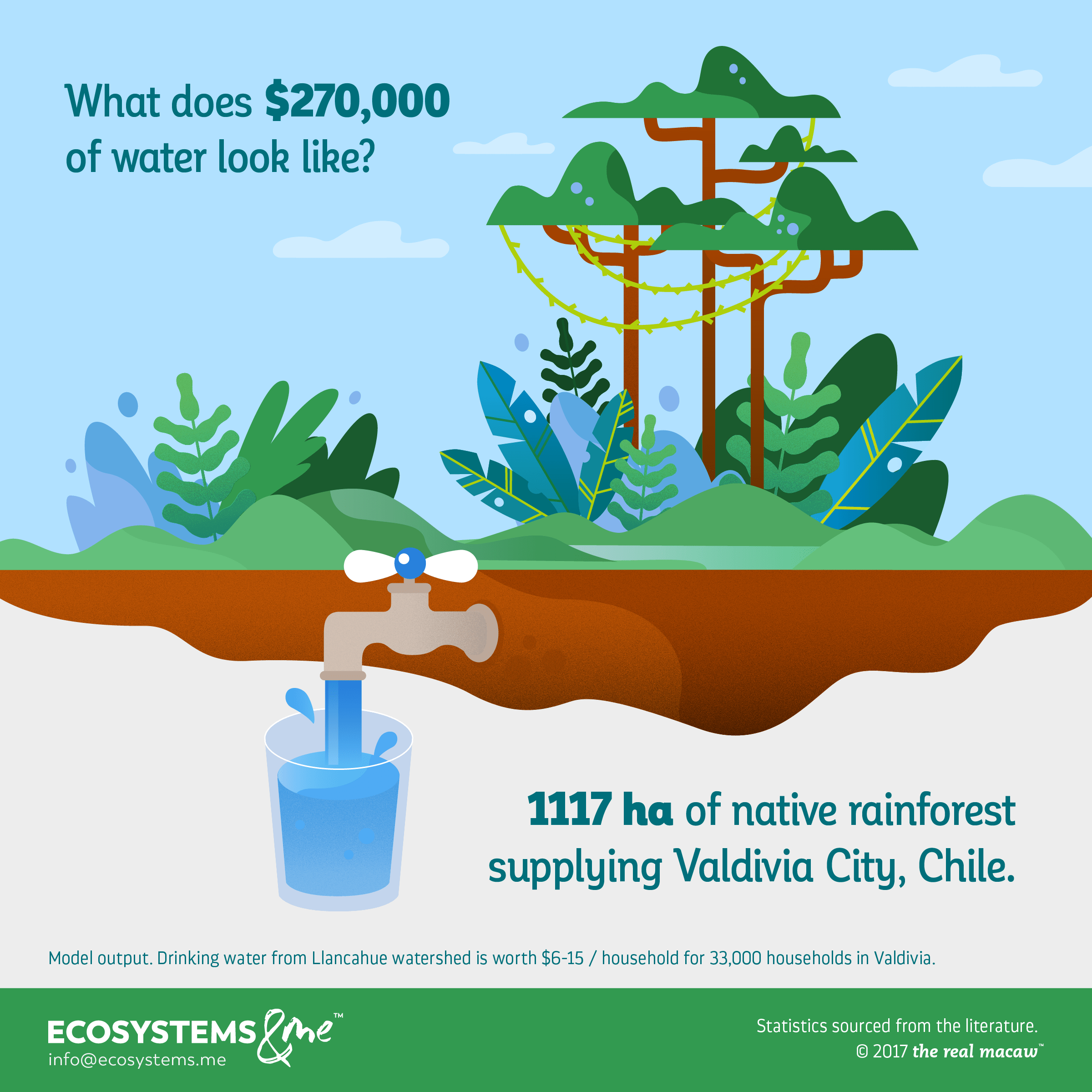
Answer: 1117 hectares of rich temperate rainforest in the Llancahue watershed, supplying drinking water to Valdivia City (one of the main cities in southern Chile).
Valdivia’s rainforests
Watersheds are areas that catch rainfall and release it into a common set of streams, rivers, and other waterways. Valdivian temperate rainforests are perfect for this: their trees’ large leaves are excellent at catching water and moderating flow; plant roots and other soil creatures change the structure of the soil so that it can absorb more water during rains (preventing floods); and they release the water slowly afterwards (preventing droughts).
Water from Valdivia’s temperate rainforests is worth $270,000 to Valdivia City.
Valdivia’s rainforests are the only temperate rainforests in South America, and they have been threatened by logging and plantations. Although plantations can look similar to native forests, they’re not the same. They generally have less biodiversity and diversity, and they can’t provide the same services. In a way, it’s like a small startup that specializes in one thing, versus a large business that can take care of all your needs.
Also, young, growing trees, like those on plantations, consume much more water. (Again, this depends on location, size, and situation, but it’s very often true.)
Llancahue watershed and drinking water
Llancahue watershed has around 1117 ha of temperate rainforest. Only one stream drains it, and that stream is a major source of water for Valdivia city – especially in summer (the dry season). Because there’s much less water in summer, its value goes up. And, because there’s less water, any change in general water supply will have a much larger effect on drinking water supply in summer, compared to the rest of the year. So, to recap, we have:
- the amount of drinking water produced by the forests in the watershed
- the number of households in Valdivia that use the water (33,000)
- the price of drinking water
- the change in value implied by much lower water availability in summer
- a weighting factor (because summer doesn’t last the whole year)
Obviously, the change in value can’t be measured directly. Luckily, there are models, and those tell us that the water is worth around $270,000.
That’s a lot, but there’s a bigger takeaway: the forests in Llancahue watershed supply drinking water to Valdivia. As expected, replacing native forests with plantations reduces water flow – by 2.7 times more in summer than in winter. With rainfall expected to decrease in southern Chile, it means these lavish forests are especially valuable during the dry season, when the risks of drought are higher.
